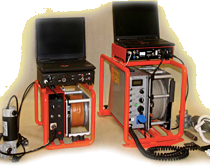How to use W&R instuments tools
The logging tools and our services are utilised in geological, geophysical and environmental projects by industry, governments and universities around the world. This fact is confirmed by our customers and clients. Also the work with our tools is easy and efficient. In case you need we provide training courses as a part of the purchase of our products. In addition our tool have life tie warranty and we can guarantee professional service without any additional costs no matter what!
Easy to use
for operators in the field
Trainng courses
with purchased HW or SW
Transport
easy and efficient
EXAMPLES OF USING W&R TOOLS AND SYSTEMS
Transport on the location
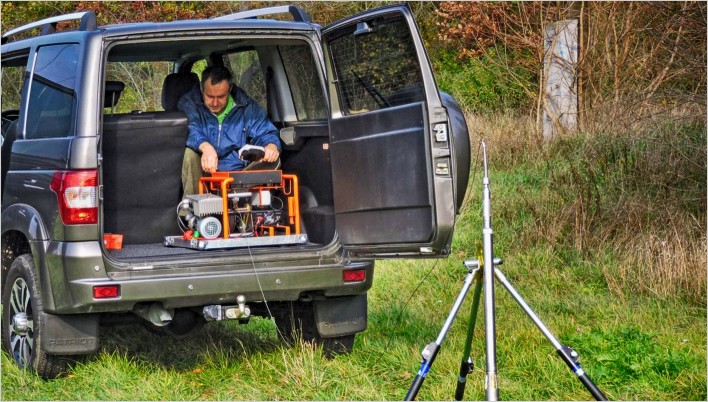
Flexible in the field is crucial for successful analyzing of enviroment. Our system is light weight. For the whole time you will need only two operators.
Preparing for prospecting the boreholes
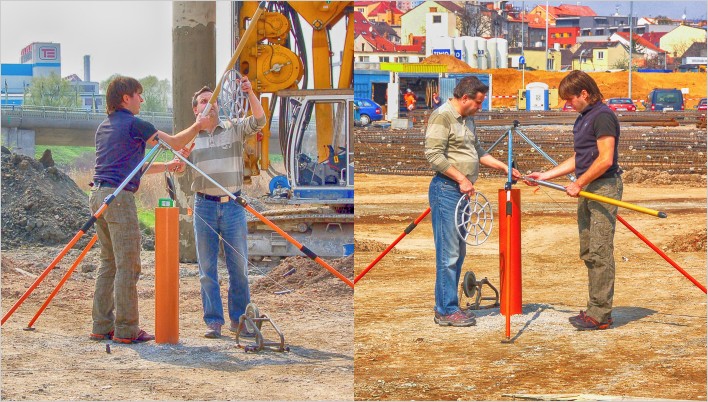
The set up of the system is really easy and doesn’t need any special tools or equipment. Also the weight is pretty reasonable - no cranes, no heavy technique, no big crews of workers.
Collecting a data
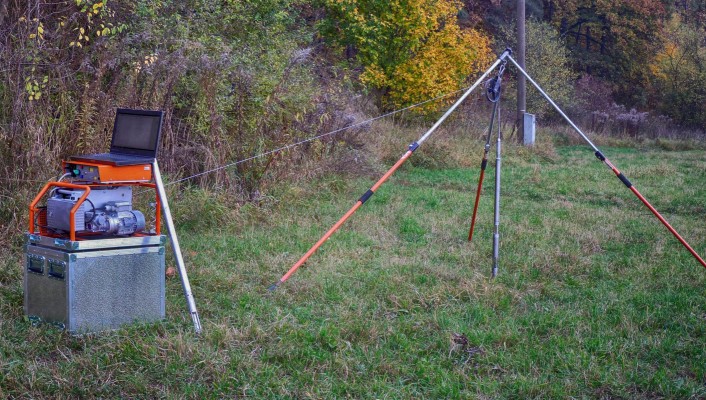
W&R instuments tools and systems can operate anytime and anywhere. No matter what weather conditions or he enviroment are you will always get exact and quality data what you need.
Analyzing a data
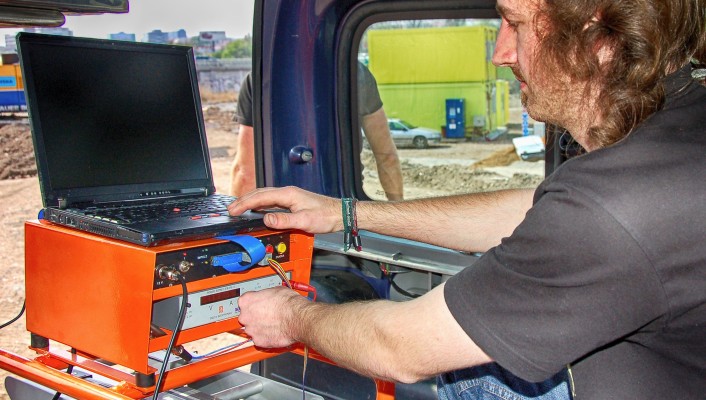
Due to matched W&R instruments HW and SW you can analyzing your data right on the spot. It fast and same quality as in the lab. Just connect your laptop with our or third party software for analyzing and you are ready to go. Don’t waste your time with traveling, storing loads of data from prospecting.
INTRODUCTION
 Logging probes contain sensors able to supply information on physical parameters of the rock and soil medium around the borehole, fluid column and flow parameters in the borehole, and to some extent on the character and state of individual elements of the well such as casing, filter, and sealing materials in the annulus between the casing mantel and the borehole wall (e.g. clay, cement, mud). Logging tools are equipped with a special head for connecting the tool to the cable head. The logging cable together with the winch system is used to connect the logging probe with the surface part (supplying and recording units) of the logging system, to run the tool in the borehole downwards and upwards, to power the probe and transmit data from the sensor to the recording unit. Measurements are usually made with the probe pulled upwards to secure steady tension on the logging cable when data are recorded. The probes have different dimensions, i.e. diameter ranging between 38 and 60 mm, length usually not exceeding 2 m and weight between 3 and 10 kg. The choice of the probe depends predominantly on the physical properties of the examined geological body and their contrast to the physical properties of the surrounding medium. It is also necessary to consider the diameter of the borehole, inner diameter and material of the casing etc. These parameters can be in some cases limiting (e.g. probes measuring magnetic succeptibity or electrical conductivity of the rock medium cannot be used in boreholes equipped with steel casing).
Logging probes contain sensors able to supply information on physical parameters of the rock and soil medium around the borehole, fluid column and flow parameters in the borehole, and to some extent on the character and state of individual elements of the well such as casing, filter, and sealing materials in the annulus between the casing mantel and the borehole wall (e.g. clay, cement, mud). Logging tools are equipped with a special head for connecting the tool to the cable head. The logging cable together with the winch system is used to connect the logging probe with the surface part (supplying and recording units) of the logging system, to run the tool in the borehole downwards and upwards, to power the probe and transmit data from the sensor to the recording unit. Measurements are usually made with the probe pulled upwards to secure steady tension on the logging cable when data are recorded. The probes have different dimensions, i.e. diameter ranging between 38 and 60 mm, length usually not exceeding 2 m and weight between 3 and 10 kg. The choice of the probe depends predominantly on the physical properties of the examined geological body and their contrast to the physical properties of the surrounding medium. It is also necessary to consider the diameter of the borehole, inner diameter and material of the casing etc. These parameters can be in some cases limiting (e.g. probes measuring magnetic succeptibity or electrical conductivity of the rock medium cannot be used in boreholes equipped with steel casing).
 Finally, it is necessary to take into account the final depth of the borehole and to decide if the temperature and pressure values at the bottom of the well do not exceed the maximum working tempera- ture and pressure indicated by the producer as limiting for the selected tool. In general, logging probes of the W&R Instrument provenience can withstand temperatures not exceeding 70°C and pressures not exceeding 15 MPa. The most important (limiting) value is the maximum working temperature, indicating the maximum admitted depth of 2300 m for the usual temperature gradient TG = 30°C/1000 m. We can conclude that under normal temperature and pressure conditions, the W&R logging probes are safe up to the depth of 2000 m. We must be well advised in wells with thermal water, where the maximum working temperature of the tool can be exceeded in much smaller depth.
Finally, it is necessary to take into account the final depth of the borehole and to decide if the temperature and pressure values at the bottom of the well do not exceed the maximum working tempera- ture and pressure indicated by the producer as limiting for the selected tool. In general, logging probes of the W&R Instrument provenience can withstand temperatures not exceeding 70°C and pressures not exceeding 15 MPa. The most important (limiting) value is the maximum working temperature, indicating the maximum admitted depth of 2300 m for the usual temperature gradient TG = 30°C/1000 m. We can conclude that under normal temperature and pressure conditions, the W&R logging probes are safe up to the depth of 2000 m. We must be well advised in wells with thermal water, where the maximum working temperature of the tool can be exceeded in much smaller depth.
DEPOSITS OF RAW MATERIALS
Prospecting boreholes in search for coal
Physical properties of coal seams: Low density (brown coal density 1.15 g/cm3, black coal density 1.5 g/cm3) in comparison with the density of adjacent rocks (2.0 g/cm), the higher highest possible hydrogen index (IH = 0.6), low natural radioactivity, higher coal resistivity in comparison with adjacent clay and silt layers.
Goal of logging: To identify the depth and thickness of coal seams in the lithological column, determine ash content of coal, formation volume analysis of barren layers.
Recommended set of logs: Gamma-gamma density log (probe HDG-453 with Cs 137 as a source of gamma radiation), gamma-ray log combined with guard conductivity log (probe HLG-453), induction log (ideal probe is H3I-453, probes HI-381 or HI-453 can also be used), neutron porosity log (probe HN-453 with the neutron source Am-Be), caliper log (HC-380 or HC-453).
Prospecting boreholes in search for Pb-Zn-Cu ore deposits
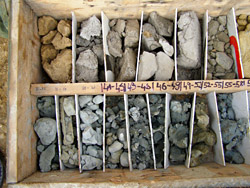 Common ore minerals: Pyrite, pyrrhotine, arsenopyrite, antimonite, chalcopyrite, sphalerite, galenite. Physical properties of ore minerals: High electron conductivity similar to conductivity of metals, density of ore minerals (4 .0 to 7.5 g/cm3) distinctly exceeds the density of barren rocks (2.6 to 3.1 g/cm3), pyrrhotine exhibits relative high magnetic susceptibility.
Common ore minerals: Pyrite, pyrrhotine, arsenopyrite, antimonite, chalcopyrite, sphalerite, galenite. Physical properties of ore minerals: High electron conductivity similar to conductivity of metals, density of ore minerals (4 .0 to 7.5 g/cm3) distinctly exceeds the density of barren rocks (2.6 to 3.1 g/cm3), pyrrhotine exhibits relative high magnetic susceptibility.
Goal of logging: Delineation of ore deposits in the borehole profile, structure description of the ore body (massive ore, impregnation, disseminated ore minerals), determination of basic lithological types of barren rocks in the borehole profile.
Recommended set of logs: Gamma-gamma density log (probe HDG-453 with Cs137 as a source of gamma radiation), gamma-ray log combined with guard conductivity log (probe HLG-453), magnetic susceptibility log and induction conductivity log with coil distance 30 cm (the ideal probe is the two parametric HMI-453E*), caliper log (HC-380 or HC-453), current log with gliding contacts (probe HGC-380), electrode potentials log (EP), self poten- tial log (SP). Probes for the last two logs are not included in the production program of the W&R Instruments.
Prospecting boreholes in search for Fe ore deposits
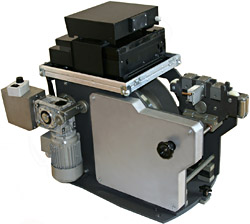 Ore mineral: Magnetite Physical properties of the ore mineral: High electron conductivity similar to conductivity of metals, density of mag- netite (5 .0 g/cm3) distinctly exceeds the density of barren rocks (2.6 to 3.1 g/cm3), the highest possible magnetic susceptibility among ore minerals.
Ore mineral: Magnetite Physical properties of the ore mineral: High electron conductivity similar to conductivity of metals, density of mag- netite (5 .0 g/cm3) distinctly exceeds the density of barren rocks (2.6 to 3.1 g/cm3), the highest possible magnetic susceptibility among ore minerals.
Goal of logging: Delineation of ore deposits in the borehole profile, structure description of the ore body (massive ore, impregnation, disseminated ore minerals), percentual content of the magnetite in the ore body, determination of basic lithological types of barren rocks in the borehole profile.
Recommended set of logs: Magnetic susceptibility log (the ideal probe is the two parametric HMM-453 that can be used for determination of the magnetite content in ore bodies), gammagamma density log (probe HDG-453 with Cs 137 as a source of gamma radiation), gamma-ray log combined with guard conductivity log (probe HLG-453), caliper log (HC-380 or HC-453).
Prospecting boreholes in search for building and ornamental stones
Common types of rocks: Granite, granodiorite, gabbrodiorite, gabbro, limestone. Physical properties: High formation resistivity in the order kOm, density in the range 2.65 to 3.0 g/cm3, very low hydrogen index.
Goal of logging: Delineation of solid rock blocks without joints and fractures, for limestone additional determination of the clay and silt content.
Recommended set of logs: Gamma-ray log combined with guard conductivity log (probe HLG-453), induction log (probe HI-381 or HI-453), gamma-gamma density log (probe HDG-453 with Cs137 as a source of gamma radiation), caliper log (HC-380 or HC-453).
PROSPECTING AND MONITORING BOREHOLES IN HYDROGEOLOGICAL STRUCTURES
Porous aquifers
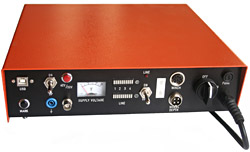 Unconsolidated water saturated porous clastic sediments, e.g. Quaternary sand and gravel alluvial deposits in large river valleys. Consolidated layers of conglomerates and sandstones in deeper sedimentary basins of the Mesozoic and Tertiary Era are another type of porous aquifers. Aquifers in both these cases are layers of relatively high porosity and usually also good permeability as a contrast to impermeable layers of silt and clay (siltstones and claystones). Permeable layers are characterized by low natural radioactivity, by resistivity values in the range of hundreds Qm, usually by negative SP anomaly as a consequence of electrochemical and streaming potentials on the borehole wall of the permeable layer.
Unconsolidated water saturated porous clastic sediments, e.g. Quaternary sand and gravel alluvial deposits in large river valleys. Consolidated layers of conglomerates and sandstones in deeper sedimentary basins of the Mesozoic and Tertiary Era are another type of porous aquifers. Aquifers in both these cases are layers of relatively high porosity and usually also good permeability as a contrast to impermeable layers of silt and clay (siltstones and claystones). Permeable layers are characterized by low natural radioactivity, by resistivity values in the range of hundreds Qm, usually by negative SP anomaly as a consequence of electrochemical and streaming potentials on the borehole wall of the permeable layer.
Goal of logging: Identification of permeable layers in the borehole profile, estimation of reservoir properties of aquifers (clay content, porosity), evaluation of totally dissolved solids in ground water, delineation of main lithological types in the borehole profile.
Recommended set of logs: Gamma-ray log combined wit guard conductivity log (probe HLG-453), induction log (the ideal version is the probe H3I-453 with three different radial depths of investigation), gamma-gamma density log (probe HDG-453 with the gamma source Cs137), neutron porosity log (probe HN-453 with the Am-Be neutron source), caliper log (HC-380 or HC-453), fluid resistivity log and temperature log (probe HRT-381).
Fractured aquifers
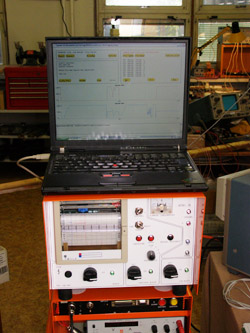 Typical fractured aquifers are created in limestones, dolomites and in smaller extent in crystalline rocks (igne- ous and metamorphic rocks). Physical properties: Individual fractures and fracture zones are characterized by low resistivity (higher con- ductivity), low density, higher hydrogen index, and by existence of smaller or greater caverns in the borehole wall. Construction of the lithological column is based on the natural radioactivity (gamma-ray log), magnetic susceptibility (susceptibility log) and formation density (gamma-gamma density log). Silicic rocks (granite, gneiss) differ from basic rocks (gabbro, amphibolite) by higher natural radioactivity, lower density and lower magnetic susceptibility.
Typical fractured aquifers are created in limestones, dolomites and in smaller extent in crystalline rocks (igne- ous and metamorphic rocks). Physical properties: Individual fractures and fracture zones are characterized by low resistivity (higher con- ductivity), low density, higher hydrogen index, and by existence of smaller or greater caverns in the borehole wall. Construction of the lithological column is based on the natural radioactivity (gamma-ray log), magnetic susceptibility (susceptibility log) and formation density (gamma-gamma density log). Silicic rocks (granite, gneiss) differ from basic rocks (gabbro, amphibolite) by higher natural radioactivity, lower density and lower magnetic susceptibility.
Goal of logging: Identification of fractures and fracture zones in the borehole column, delineation of main litho- types in carbonate sediments, delineation of silicic and basic rocks in the lithological column of crystalline rocks.
Recommended set of logs: Gamma-ray log combined with guard conductivity log (probe HLG-453), induction log (the ideal version is the probe H3I-453 with three different radial depths of investigation), gamma-gamma density log (probe HDG-453 with the gamma source Cs137), neutron porosity log (probe HN-453 with the Am-Be neutron source), magnetic susceptibility log (two parameter probe HMM-453 is preferentially used), caliper log (HC-380 or HC-453), fluid resistivity log and temperature log (probe HRT-381).
Water flow in boreholes and hydraulic parameters of aquifers
In a borehole, vertical flow (along the borehole axis) as well as horizontal flow (perpendicular to the borehole axis) can be observed.
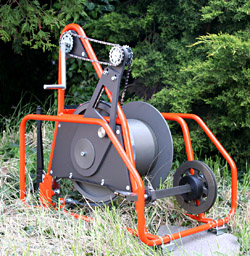 Vertical flow: The vertical flow is usually due to different piezometric levels of individual aquifers opened by the borehole. It is generated by the water discharge from the aquifer with the higher piezometric level and by water recharge into the aquifer with the lower piezometric level. The flow can be oriented upwards as well as downwards. Additionally, vertical water flow can be provoked by the pumping tests or the injection test. Parameters (direction, velocity or flow rate) of the natural as well as the provoked flow in the borehole are important input data for determination of water discharges from indi- vidual aquifers and estimation of their hydraulic parameters (piezometric level, transmissivity and hydraulic conductivity).
Vertical flow: The vertical flow is usually due to different piezometric levels of individual aquifers opened by the borehole. It is generated by the water discharge from the aquifer with the higher piezometric level and by water recharge into the aquifer with the lower piezometric level. The flow can be oriented upwards as well as downwards. Additionally, vertical water flow can be provoked by the pumping tests or the injection test. Parameters (direction, velocity or flow rate) of the natural as well as the provoked flow in the borehole are important input data for determination of water discharges from indi- vidual aquifers and estimation of their hydraulic parameters (piezometric level, transmissivity and hydraulic conductivity).
Goal of logging: Parameters of water flow in the borehole and hydraulic parameters of individual aquifers.
Recommended set of logs: High resolution temperature log and fluid resistivity log (probe HRT-381), photo- metric log (probe HFN-453), flowmeter log (probe HF-380 can be used only if flow velocity is higher than 2 mm/s). In the case of lower velocities, it is possible to use the multifunctional probe HRTFN-500D, also working as a high resolution flowmeter. Another chance is to record a time series of fluid resistivity logs after treating the water in the borehole by NaCl or a time series of photometric logs after treating the water column in the borehole by food colour tracer Brilliant Blue FCF (Euro code E 133).
Horizontal flow: Horizontal flow can be observed in boreholes situated in shallow Quaternary aquifers of alluvial sediments with free ground water level or in deeper aquifers with confined ground water level. Horizontal flow is in both cases in the direction of the hydraulic gradient.
Goal of logging: Delineation of the depth interval with water flow across the well, parameters of the horizon- tal water flow (apparent filtration velocity, specific horizontal flow, azimuth - geographical orientation of the horizontal water flow).
Recommended set of logs: High resolution temperature log and fluid resistivity log (probe HRT-381), pho- tometric log (probe HFN-453), special construction of impeller flowmeter indicating velocity of horizontal water flow in discrete depth intervals (probe of that type is not among products of W&R Instruments Com.), special probe indicating the direction of horizontal water flow (probe HDS-600).
Methodological comments: Special impeller flowmeter is able to determine horizontal velocities only if higher than 2 mm/s. For velocities below this limit, the dilution method should be used. It is based on a time series of fluid logs after treating the water column in the well by a tracer (e.g. sodium chloride if the time series of fluid resitivity logs is used for estimation of the horizontal flow velocity).
APPLICATION OF LOGGING IN ENVIRONMENTAL RESEARCH AND MONITORING
Contamination hydrogeology
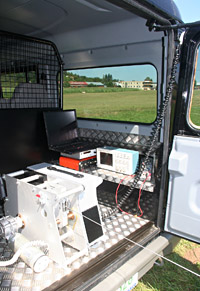 Monitoring wells equipped with PVC casing are usually drilled in areas with soil and water pollution in order to check ground water quality and its changes with increasing time. Typical sources of inorganic contamination are chemical factories, workshops treating chemically surface of metallic parts, plants extracting metals from ore deposits, depositories of municipal or industrial wastes, old landfills, some times even special mining technologies (extraction of metal elements by means of acids or lyes injected into rock medium). Physical and chemical properties of inorganic contaminants: Inorganic contaminants (acids, lyes, salts) are easy soluble in water, dissociate to positive and negative ions. The conductivity of contaminated waters is proportional to the total dissolved chemicals excee- ding one to two orders the conductivity of fresh water. It helps for easy detection of waters and soils contaminated by inorganic contaminants.
Monitoring wells equipped with PVC casing are usually drilled in areas with soil and water pollution in order to check ground water quality and its changes with increasing time. Typical sources of inorganic contamination are chemical factories, workshops treating chemically surface of metallic parts, plants extracting metals from ore deposits, depositories of municipal or industrial wastes, old landfills, some times even special mining technologies (extraction of metal elements by means of acids or lyes injected into rock medium). Physical and chemical properties of inorganic contaminants: Inorganic contaminants (acids, lyes, salts) are easy soluble in water, dissociate to positive and negative ions. The conductivity of contaminated waters is proportional to the total dissolved chemicals excee- ding one to two orders the conductivity of fresh water. It helps for easy detection of waters and soils contaminated by inorganic contaminants.
Goal of logging: Conductivity estimation of soils, formations and ground waters and estimation of corresponding concentrations relating to total dissolved inorganic chemicals. Estimates of filtration velocities according to results of dilution technique based on time series of photometric logs after application of the colour tracer Brilliant Blue to the water column in the well.
Recommended set of logs: Induction log (ideal is probe H3I-453 measuring formation conductivity), guard con- ductivity (probe HLG-453 to verify the position of perforated PVC casing), fluid resistivity log and high resolution temperature log (probe HRT-381 measuring conductivity of the water column in the well), photometric log (probe HFN-453 to verify the fluid transparency of the water column in the well, having also the role of the zero log for possible application of the dilution technique with the colour tracer Brilliant Blue FCF). Dilution technique based on the time series of fluid resistivity logs and NaCl as a tracer cannot be usually applied for high conductivity of the contaminated ground water.
Protection of mineral waters in the spa area
In the protection zone of the spa mineral waters some monitoring wells are usually situated to control in regular time intervals the quality of mineral water. Logging data can be used as input data into the data basis database to prevent the mineral water from any harm that can be evident if physical parameters of the mineral water deviate suddenly from average values.
Goal of logging: Check the quality of mineral waters in situ based on conductivity data of mineral water and conductivity of formations adjacent to the borehole.
Recommended set of logs: Induction log (ideal is probe H3I-453 measuring to measure formation con- ductivity), guard conductivity (probe HLG-453 to verify the position of perforated PVC casing), fluid resistivity log and high resolution temperature log (probe HRT-381 measuring to measure conductivity of the water column in the well), photometric log (probe HFN-453 verifying to verify the fluid transparency of the water column in the well, also in the role of the zero log for possible application of the dilution technique with the colour tracer Brilliant Blue FCF). Dilution technique based on the time series of fluid resistivity logs and NaCl as a tracer cannot be usually applied for high conductivity of mineral waters.
Technical control of the borehole
For reliable evaluation and interpretation of the logging data information on the technical condition of the borehole (diameter, dip of the borehole and its orientation - azimuth) and parameters of the borehole completion (material, inner diameter, depth of the casing bottom, depth intervals with cement ring, etc.) are required. The required data are sometimes not available or not reliable. The data on the technical con- dition of the borehole can be verified using a suitable set of logs. The physical parameters of the casing material and the cement ring behind the casing: The most common type of casing is the steel casing with following characteristic parameters: high electrical conductivity, high magnetic susceptibility, velocity of the acoustic signal is 5 km/s. Another material currently used is PVC or PE especially in the case of moni- toring wells in contaminated areas. PVC and PE are materials characterised by high electrical resistivity (electrical insulators), by velocity of elastic waves 2500 m/s and with no disturbance or interference with the magnetic field (paramagnetic). The casing ring has a density of cca. 2 g/cm3, magnetic susceptibility usually higher than that of the material of adjacent rocks. The space behind the casing filled with water (without cement ring) exhibits a density of 1 g/cm3 and zero magnetic susceptibility.
Goal of logging: Reliable technical condition of the borehole and borehole completion.
Recommended set of logs: Magnetic susceptibility log and induction log (probe HMI-453 for reliable determination of the casing end), guard conductivity log (probe HLG-453 for reliable control of not sea- ling connections in the PVC casing column and for determination perforated parts of PVC casing), caliper log and inclinometry (probe HC-453a), magnetic susceptibility log (probe HMI-453) for reliable control of cement quality behind the casing (sealing annulus between the PVC casing and the borehole wall).

